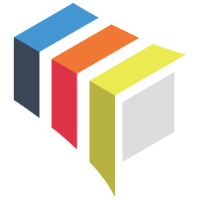QUESTIONS? CALL:
+1 (833) BOODSKAp
A Clear Vision for the Future of IoT and Smart Cities with Boodskap | Natalie Fisher
A Clear Vision for the Future of IoT and Smart Cities with Boodskap
- As urban populations continue to grow, cities around the world face increasing pressure to provide efficient, sustainable, and high-quality services to their residents. The integration of Internet of Things (IoT) technology into urban infrastructure is a powerful solution to these challenges, transforming traditional cities into smart cities. Boodskap's IoT Platform as a Service (PaaS) is at the forefront of this transformation, offering comprehensive solutions to optimize city operations, enhance public services, and improve the quality of life for citizens.
- Smart cities leverage IoT technology to collect, analyze, and act on data from a variety of connected devices. These devices include sensors, cameras, meters, and other equipment that monitor and manage urban infrastructure. The data generated by these devices provides valuable insights that city planners and administrators can use to make informed decisions. According to recent studies, the number of IoT devices is expected to nearly double by 2030, reaching over 29 billion devices globally (SAS Blogs). This explosive growth underscores the importance of integrating IoT into city planning and management.
- Boodskap’s IoT platform supports a wide range of smart city applications, each designed to address specific urban challenges:
- Description: By using IoT sensors and data analytics, cities can monitor and control traffic flow in real-time, reducing congestion and improving road safety.
- Benefits: Enhanced traffic efficiency, reduced emissions, and improved commuter experience.
- Example: Motion sensors and smart traffic lights that adjust based on real-time traffic conditions.
- Description: IoT devices track air and water quality, noise levels, and other environmental factors, providing critical data for maintaining a healthy urban environment.
- Benefits: Better public health outcomes, compliance with environmental regulations, and data-driven policy-making.
- Example: Motion sensors and smart traffic lights that adjust based on real-time traffic conditions.
- Description: Automated street lighting systems that adjust brightness based on real-time conditions, such as ambient light and pedestrian activity.
- Benefits:Significant energy savings, reduced operational costs, and enhanced public safety.
- Example: Smart street lights equipped with light and motion sensors.
- Description: Surveillance cameras, acoustic sensors, and emergency response systems that enhance city security and emergency management.
- Benefits: Improved crime detection, faster emergency response, and safer communities.
- Example: Surveillance cameras integrated with analytics software to detect and respond to incidents.
- Description: Monitoring and optimizing water, electricity, and gas usage through IoT-enabled devices.
- Benefits:Reduced waste, lower operational costs, and sustainable resource management.
- Example: Smart meters and flow sensors that provide real-time usage data.
- Boodskap’s IoT PaaS provides a robust, scalable, and secure infrastructure for integrating and managing IoT devices across urban environments. Key features of the platform include:
- Real-Time Data Analytics: Advanced tools for collecting, analyzing, and visualizing data from IoT sensors, enabling timely and informed decision-making.
- Predictive Analytics: Using machine learning algorithms to predict future trends and optimize city operations proactively.
- Seamless Integration: Advanced tools for collecting, analyzing, and visualizing data from IoT sensors, enabling timely and informed decision-making. Compatibility with a wide range of IoT devices and protocols, ensuring easy deployment and integration.
- Scalability: The ability to scale up as the number of connected devices grows, ensuring consistent performance and reliability.
- Security: Robust security measures to protect data integrity and privacy, crucial for maintaining public trust and safety.
- The future of smart cities is bright, with IoT technology playing a central role in urban development. By embracing IoT solutions like Boodskap’s platform, cities can become more efficient, sustainable, and responsive to the needs of their residents. As urban challenges evolve, the integration of IoT into city planning will continue to be a driving force for innovation and improvement. For more information on how Boodskap’s IoT Platform can transform your city into a smart city, visit Boodskap.io.

